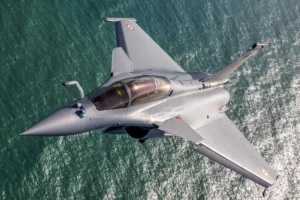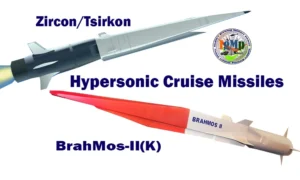The 44-Day-War in 2020 between Azerbaijan and Armenia, followed by the Russia-Ukraine war that has raged for over a year, have both established a battle-winning weapon of modern warfare – the armed remotely piloted vehicle (RPV), usually referred to as the armed drone.
Now India’s military has begun equipping itself with variants of armed drones that could tilt battles in its favour on the mountainous Sino-Indian frontier or in the deserts of Rajasthan, where Indian armoured forces face off against Pakistani tanks.
Over the coming week, the army will conducts tests in Pokhran ofan “aerial targeting system” for the artillery directorate. It is called the PALM 400 – the acronym for “precision attack loitering system” – and is designed to fly over armoured vehicle concentrations, or areas where they are expected. When the armoured vehicles arrive in this “kill zone”, each PALM 400 picks out its target and fires an armour-penetrating projectile, penetrating it from the top, where its armour protection is the least.
In mid-February, another PALM RPV passed a gruelling set of trials in the extreme altitudes of Sikkim. There, the RPV was fired from an altitude of 18,000 feet and, after loitering at 19,500 feet, fired a thermobaric warhead that struck a target 8 kilometres away.
The PALM 400 RPV is launched from a canister and can loiter (remain on station) over a kill zone for up to 120 minutes flying at 3,000-4,000 feet above the ground. It flies at 50-140 knots (90-260 kilometres per hour), giving it a range of over 100 km.
These capabilities have ensured the army has chosen AVision Systems from 21 companies in a global Request for Proposals (RfP). All that is left is for the PALM system to pass its trials in Pokhran.
The PALM 400 claims to be an Indian product, since AVision Systems is a joint venture (JV) between Israeli firm, UVision Air Ltd and Hyderabad-
based Aditya Precitech Private Ltd (APPL). The Indian firm has had a long association with the Defence Research & Development (DRDO) in various missile projects.
PALM RPVs employ state-of-the art, stabilized, dual electro-opticalinfra-red (EOIR) cameras to identify and engage targets during day or night. Its high-end, homing capabilities ensure accurate tracking of static and moving targets. The RPV employs sophisticated navigation methods, which allow it to operate even in environments where the Global Positioning System – the navigation backbone for most missile systems – has been denied to the system.
Trials conducted so far have determined that the PALM 400’s design allows for exceptional manoeuvrability, and has a mid-air abort capability that allows automatic re-entry into loitering mode, re-engagement, or return to the recovery area using a parachute.
In trials, the system has demonstrated an ability to stealthily loiter above a target, gather intelligence and strike instantly at time-sensitive threats. The PALM 400 is also effective against strategic enemy targets with its customizable warhead designed to handle different types of targets.


.webp)



